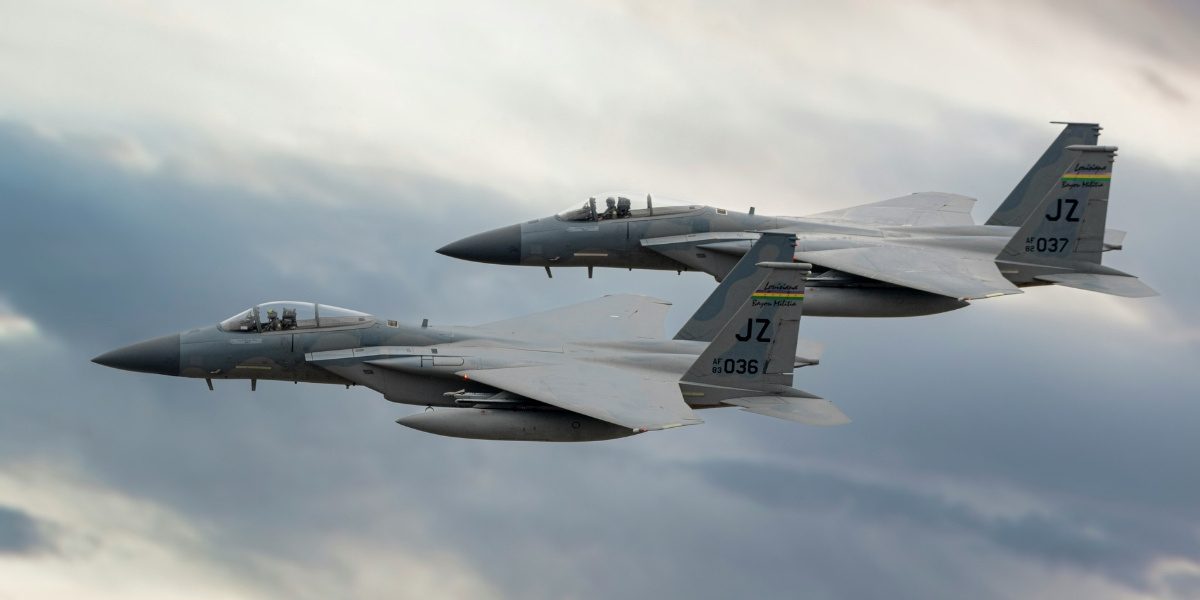How Has US Air Dominance Shaped Military Strategy?
The history of United States air dominance is a story of innovation, technological leaps, and strategic evolution. From the early days of World War I, when the US first introduced fighter planes to the battlefield, air superiority has played a critical role in military success. The ability to control the skies allows forces to protect ground troops, disrupt enemy operations, and deliver precision strikes.
During World War II, iconic fighter jets such as the P-51 Mustang helped establish air supremacy, contributing significantly to Allied victories. The jet age began with aircraft like the F-86 Sabre, which saw action in the Korean War, demonstrating the shift toward faster, more maneuverable fighters. Each conflict drove advancements in speed, avionics, weaponry, and stealth, ensuring the US maintained an edge over adversaries.
US air dominance became not just a tactical advantage but a strategic necessity. Maintaining control of airspace safeguards national interests and projects power globally. Over time, the development of multirole fighters capable of handling air-to-air and air-to-ground missions has increased flexibility and effectiveness.
Read Also: What It Takes to Join U.S. Special Operations Forces
What Defines the Present Generation of US Fighter Jets?
Today’s US fighter jets represent the culmination of decades of research, development, and combat experience. Aircraft like the F-22 Raptor and F-35 Lightning II embody cutting-edge technology designed to maintain air superiority in an increasingly contested environment.
The F-22 Raptor is renowned for its stealth capabilities, supercruise speed (flying supersonic without afterburners), and advanced avionics. These features allow it to penetrate sophisticated enemy defenses and engage targets with precision before being detected. Its agility and sensor fusion enhance situational awareness, providing pilots with critical data in real time.
The F-35 Lightning II takes a different approach with its emphasis on multirole flexibility and interoperability. Available in three variants for different branches of the military, the F-35 integrates stealth, sensor technology, and networked communications. It acts as a force multiplier, sharing information seamlessly with other assets on the battlefield, from drones to ground forces.
Current US fighter jets also emphasize survivability, electronic warfare capabilities, and advanced weapon systems. The integration of artificial intelligence and autonomous functions is increasingly important, allowing for faster decision-making and reducing pilot workload.
How Have Technological Innovations Transformed Fighter Jet Capabilities?
Technological innovation has driven the evolution of fighter jets from simple biplanes to sophisticated machines capable of dominating complex battle spaces. Key advancements include:
-
Stealth Technology: Reducing radar signature to evade detection has become a game-changer. Stealth designs and materials allow US jets to operate in heavily defended areas with reduced risk.
-
Advanced Avionics: Modern fighters use sensor fusion to combine radar, infrared, and other sensor data into a comprehensive battlefield picture. This real-time information enhances targeting and threat detection.
-
Supersonic and Hypersonic Speeds: Increasing speed improves survivability and strike capability. Supercruise technology in jets like the F-22 allows prolonged supersonic flight without excessive fuel consumption.
-
Network-Centric Warfare: Fighters are now nodes in a larger digital battlefield, sharing data with other aircraft, ships, satellites, and ground units. This connectivity increases coordination and response time.
-
Directed Energy Weapons: Though still in development, lasers and electromagnetic weapons promise new ways to disable enemy sensors or missiles instantly.
These technologies continually evolve to counter emerging threats like advanced air defense systems and rival nation fighters.
What Challenges Do US Fighter Jets Face Today?
Despite their advanced capabilities, US fighter jets face significant challenges. Adversaries are rapidly improving their own air defense networks and fighter technologies. Countries like China and Russia have developed stealth aircraft and integrated missile systems designed to contest US air superiority. Cost is another factor. Fifth-generation fighters like the F-35 come with high procurement and maintenance expenses, leading to debates about fleet size and modernization priorities. Balancing cutting-edge technology with affordability remains a critical issue.
Pilot training and retention also pose challenges. As aircraft become more complex, pilots require extensive education and experience. Efforts to incorporate simulators and AI assistance aim to address these demands. Cybersecurity is increasingly important. As fighters rely more on digital systems and networked communications, they become vulnerable to hacking or electronic warfare attacks.
How Will the Future of US Fighter Jets Evolve?
The future of US air dominance lies in next-generation aircraft and integrated systems. Programs like the Next Generation Air Dominance (NGAD) aim to develop fighters that exceed current capabilities in stealth, speed, and sensor integration. Unmanned combat aerial vehicles (UCAVs) are expected to work alongside manned fighters, creating “loyal wingmen” that extend operational reach and share threats. Advances in AI will enhance autonomous flight, threat assessment, and mission execution.
Modular designs and open systems architectures will allow easier upgrades and customization, keeping aircraft relevant amid rapidly changing technologies. Hypersonic weapons and directed energy systems will likely become standard, enabling faster, more precise strikes. In parallel, continued emphasis on electronic warfare, cyber defense, and space-based assets will expand the battlespace beyond traditional skies.
Read Also: The Story of the Betsy Ross Flag: A Symbol of American Independence
Why Does Air Dominance Remain Critical to National Security?
Air dominance is more than just controlling the skies—it underpins the ability to project power, protect allies, and maintain global stability. Without control of the air, ground and naval forces become vulnerable to attack and disruption. The US military’s investment in fighter jets reflects a strategic commitment to deterrence and rapid response. Advanced fighters enable precision strikes that can disable enemy infrastructure, reduce collateral damage, and shorten conflicts.
Maintaining air superiority also supports humanitarian missions, disaster relief, and peacekeeping operations worldwide. In an era of emerging great-power competition, evolving air dominance ensures the US retains a technological and operational edge that safeguards its interests and those of its partners.








